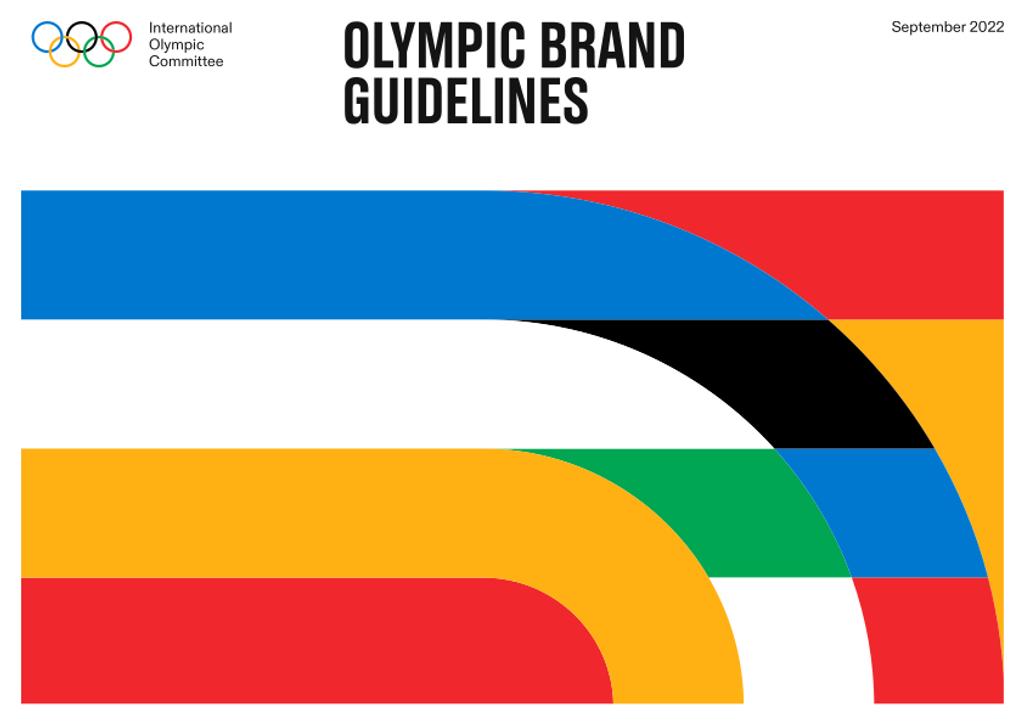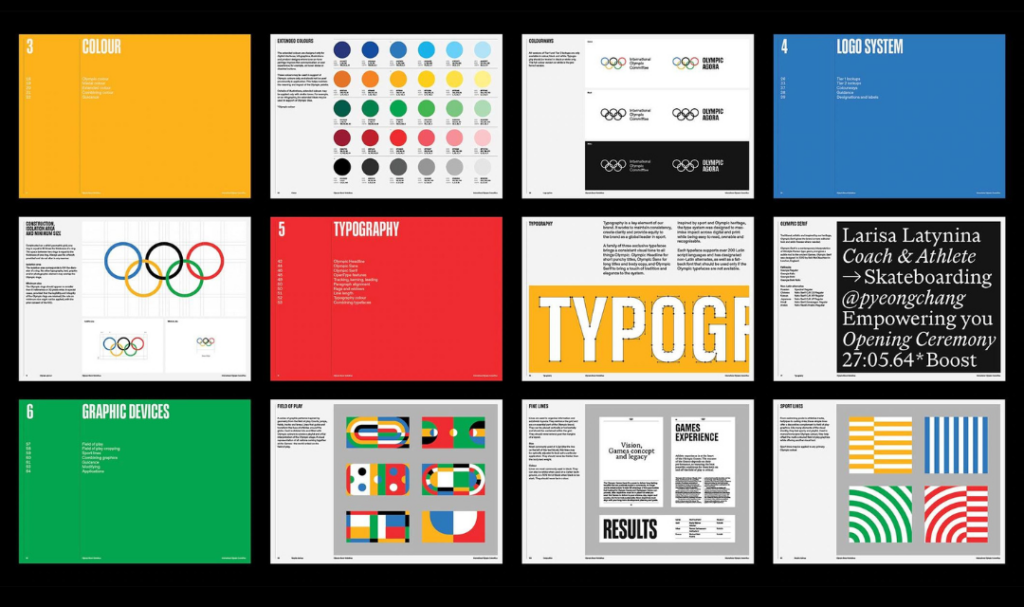The Surge in Interest for Olympic Brand Guidelines
The Case for a Centralized Brand Center
Search “Olympics Brand Guidelines” on Google, and the first result you’ll find is a link to a 136-page PDF, dated September 2022, with the Olympics brand guidelines.
Put yourself in the shoes of a vendor for the Olympics. You know, one of the hundreds of companies that prints signage, forges medals, makes sure the colors are spot-on for a TV graphics package, and so on. When you search for and find this outdated PDF because you need advice on a graphic element, do you feel confident that you’ve got the most up-to-date guidelines? How do you know these guidelines are legitimate? The first word in the URL for them ‘stillmed’ – which has an unclear meaning – and doesn’t necessarily inspire confidence.

During the recent Olympic Games, a notable trend emerged in search queries: a significant spike in interest surrounding the brand guidelines for the Olympics brand. This surge highlights not only the public’s fascination with the Olympic brand but also raises questions about brand management in large-scale events.
A truly interactive brand center exists to put uncertainty to bed, facilitate ease-of-use of the brand, increase trust in the brand itself, and reduce friction between those needing brand guidelines and the answers to their questions.
An interactive brand guide could have played a crucial role in enhancing understanding and accessibility of the Olympic brand guidelines, impacting both public perception and brand consistency.
The Importance of Interactive Brand Guidelines
Brand guidelines are essential for maintaining the integrity of a brand, especially for an organization as globally recognized as the Olympics with as many stakeholders.
These guidelines dictate how the brand should be represented visually and verbally across various platforms and mediums. They cover everything from logos and color palettes to typography and messaging. In the context of the Olympics, where a multitude of stakeholders—including sponsors, media outlets, and local organizing committees—are involved, adherence to these guidelines is crucial for a cohesive brand image.
The recent surge in search interest suggests that fans, marketers, and even casual observers are eager to learn more about what the Olympic brand stands for. This curiosity can be attributed to several factors, including the growing importance of brand identity in an increasingly competitive landscape and the desire for consistency in representation.
The Role of an Interactive Brand Center
An interactive, centralized brand center serves as a repository for all brand-related assets and guidelines. By consolidating resources in one location, organizations can ensure that stakeholders have easy access to the information they need to align with brand standards. Going further than just a Digital Asset Management (DAM) solution, brand centers like Beam’s deliver brand solutions that bring your brand guidelines to life and create a brand building experience.
Not only that, but Brand Centers frequently become hubs of activity and a rallying point for employee stakeholders. When your brand center is easy to use, contains what you’re looking for, and has a straightforward user interface, it becomes second nature to return to it repeatedly.
“Truly, our [Beam] Brand Central website has everything. If somebody is looking for something related to the WTW brand, they know to go there.” - Molly Fisher, Director, Brand Management, WTW
For the Olympics, this ought to mean having a dedicated online platform where anyone involved can find up-to-date interactive branding guidelines, promotional materials, and other essential resources.
1. Consistency Across Platforms: A brand center would ensure that every representation of the Olympic brand—whether in advertising, merchandise, or media coverage—maintains a uniform look and feel. Content living in a brand center should be consistently up to date, ensuring the true representation of the brand. This consistency is vital for fostering a strong, recognizable identity that resonates with audiences around the world.
2. Ease of Access: With a centralized resource, stakeholders wouldn’t have to hunt for guidelines scattered across various websites or documents. According to a 2021 Lucidpress study, 77% of companies deal with off-brand content. The ease of access unlocked with a brand center encourages wider compliance and more creative use of brand elements, as users would have the tools they need at their fingertips.
3. Enhanced Collaboration: A centralized brand center could facilitate collaboration among various stakeholders, including sponsors, athletes, and local committees. By having a common platform for sharing ideas and resources, the Olympic brand could evolve in a way that remains true to its core identity while allowing for innovation. Solutions like Beam’s Helpdesk also provide a single destination for managing brand requests from every direction, encouraging users to interact more with brand resources, while saving time each week.
4. Educating the Public: By making brand guidelines easily accessible, a brand center could also serve as an educational tool for the public. Fans and interested parties could learn about the symbolism behind the Olympic rings, the significance of color choices, and the messaging that accompanies the brand. This transparency can foster a deeper connection between the brand and its audience.

The Impact of an Interactive Brand Center
The spike in interest around Olympic brand guidelines underscores the need for a structured approach to brand management. A well-designed brand center would not only streamline the democratization of guidelines but also create a more engaged community around the brand. When individuals are empowered with knowledge about the brand’s identity and values, they are more likely to share that understanding within their networks, leading to organic growth in brand awareness and positive sentiment.
According to a recent Forrester report, in fact, depending on the size of your team, “Having a single source of brand truth provides efficiencies of $2.7 million over three years. The composite’s design, brand, and marketing teams save 16 hours per week in fielding requests for materials.”
Overall, the recent interest in Olympic brand guidelines reflects a broader trend of valuing brand integrity and consistency. By establishing a centralized brand center, the Olympic organization could significantly enhance stakeholder engagement, streamline brand management, and ultimately strengthen the brand’s impact on a global scale. As we look forward to future Games, it’s clear that embracing modern brand management practices could make a lasting difference in how the Olympic brand is perceived and experienced.
Contact Us
Let's Connect
Have questions or want to learn more about how Beam can help your business? Get in touch with us today. We're here to help you navigate the digital landscape with ease.